Why Trust Our Bike Sizing Guide?
You’re probably wondering, “Why should I trust this guide to help me find the right bike size?” It’s simple: We’ve helped millions of cyclists just like you find their perfect fit. This guide has been read by millions of people since we first published in early 2000’s, and we’ve been updating this guide with more information all the time we also have personally assisted thousands of riders in the comments section, answering their questions and guiding them to the ideal bike size for their needs.
With years of experience as passionate cyclists and bike fitting experts, we’ve compiled the most comprehensive and up-to-date information to make the process easy and stress-free. Our goal is to empower you with the knowledge to make an informed decision and enjoy a comfortable, efficient, and injury-free ride.
People buy bikes for a variety of reasons—racing, road biking, mountain biking, touring, or commuting. Investing in a bicycle that fits you perfectly is crucial for an enjoyable and efficient ride. A bike that’s the wrong size can lead to discomfort, inefficiency, and even potential injuries.
This guide provides detailed bike size charts for various types of bikes: mountain bikes, kids’ bikes, hybrid bikes, balance bikes, road bikes, and city/commuter bikes. We’ll also cover essential factors to consider when choosing a bike size, empowering you to make an informed decision and find the perfect bike that’s tailored to your body and riding style.
Unlocking the Perfect Fit: Your Guide to Bike Size Charts
One of the most common questions among cyclists is, “What size bike do I need?” While it’s easy to be captivated by a bike’s aesthetics, finding the right fit for your body is paramount.
Fortunately, bike sizing doesn’t have to be a daunting task. By understanding the key factors and using our comprehensive guide, you’ll be able to confidently select a bike that complements your body and riding preferences.
Here are three simple methods to get you started:
- Method One: Find Your Fit Fast: The Easy Bike Height Chart
- Method Two: Unlock Your Ideal Size: Calculate Your Bike Size
- Method Three: Explore Bike Size Charts for Men, Women, and Kids
Method #1: Find Your Fit Fast: The Easy Bike Height Chart
This method provides a quick starting point: Your height determines your bike size.
The chart below, often referred to as a bike frame size chart, matches your height to the size of the bike’s frame.
Bike Size Chart/Bike Frame Size Chart
| Height | Bike Size |
| 4’11” to 5’3” (150-160 cm) | 13 to 15 inches |
| 5’3” to 5’7” (160-170 cm) | 15 to 16 inches |
| 5’7” to 5’11” (170-180 cm) | 16 to 17 inches |
| 6’0” to 6’2” (180-188 cm) | 17 to 19 inches |
| 6’2” to 6’4” (188-193 cm) | 19 to 21 inches |
| 6’4” or taller (193+ cm) | 21 plus inches |
Road Bike Size Chart
| Height (in feet and inches / cm) | Measurement Range (in inches) | Marker |
|---|---|---|
| 4’10” to 5’2” (147-157 cm) | 47 to 48 inches | XX-Small |
| 5’2” to 5’6” (157-168 cm) | 49 to 50 inches | X-Small |
| 5’3” to 5’6” (160-168 cm) | 51 to 53 inches | Small |
| 5’6” to 5’9” (168-175 cm) | 54 to 55 inches | Medium |
| 5’9” to 6’0” (175-183 cm) | 56 to 58 inches | Large |
| 6’0” to 6’3” (183-191 cm) | 58 to 60 inches | X-Large |
| 6’3” to 6’6” (191-198 cm) | 61 to 63 inches | XX-Large |
Remember: Once you have the correct frame size, other components like the handlebars and saddle post can be adjusted for optimal comfort and control.
Method #2: Unlock Your Ideal Size: Calculate Your Bike Size
For a more precise fit, use this simple mathematical formula.
The Formula: Bike Type x Leg Inseam (cm) = Your Frame Size (cm)
Follow these steps:
- Choose Your Bike Type:
- Road bikes – x 0.70
- Mountain bikes – x 0.685
- City bike – x 0.685
- Measure Your Leg Inseam: Remove your shoes and stand with your back straight against a wall. Place a book between your legs, spine up, as if you were sitting on a bike seat. Measure the distance from the top of the book to the floor. This is your inseam measurement.
- Calculate Your Frame Size:
- Road bike: 0.70 x Leg inseam (cm) = Your frame size (cm)
- Mountain bike: 0.685 x Leg inseam (cm) = Your frame size (cm)
- City bike: 0.685 x Leg inseam (cm) = Your frame size (cm)
Example: If your leg inseam is 80 cm and you’re looking for a road bike, your ideal frame size is 80 cm x 0.70 = 56 cm.
Quick Tip: Use our bike size calculator to effortlessly determine your perfect frame size.
Method #3: Explore Bike Size Charts for Men, Women, and Kids
This section offers detailed size charts for various bike types, including road bikes, mountain bikes (for men and women), hybrid bikes, gravel bikes, and kids’ bikes. While sizing can slightly vary between brands, these charts provide a reliable starting point for finding your ideal fit.
1. Road Bike Sizing: Your Guide to Speed and Efficiency
Traditionally, road bikes are sized by their seat tube length, the distance from the top of the seat tube to the center of the bottom bracket. However, other factors like top tube length, stem length, and handlebar reach also play crucial roles in determining your riding position and comfort.
Road bike seat tubes are measured in centimeters, typically ranging from 46 cm to 64 cm. A longer seat tube generally corresponds to a larger frame, accommodating taller riders.
Road Bike Size Chart
| Frame Size | Height |
| XXS (44) | 4’8” to 5’1” (142-155 cm) |
| XS (48) | 5’1” to 5’4” (155-163 cm) |
| S (51) | 5’4” to 5’7” (163-170 cm) |
| M (54) | 5’7” to 5’10” (170-178 cm) |
| L (56) | 5’10” to 6’0” (178-182 cm) |
| XL (58) | 6’0” to 6’3” (182-190 cm) |
| XXL (60) | 6’3” to 6’5” (190-196 cm) |
| XXXL (62) | 6’5” to 6’9” (196-206 cm) |
Remember, sizing guides are just a starting point. It’s essential to consider your personal preferences and riding style. Some manufacturers now utilize Small, Medium, and Large sizing for road bikes, similar to mountain bikes.
Pro Tip: Bikes like the Cannondale Synapse and GT Grade feature a sloping top tube design, allowing for a wider range of riders. If you ride an extra small frame, you may need to consider using 650b wheels instead of the standard 700c wheels.
Dive Deeper into Road Bike Sizing:
- The 7 most important road bike sizing tips
- Why you need to worry about road bike sizing and fitting
- How to size your cyclocross bike (Cyclocross bikes typically follow road bike sizing conventions.)
- Another road bike size guide (from Evans Cycling)
2. Mountain Bike Size Chart: Navigating the Trails with Confidence
Mountain bike sizing has evolved over time. Older mountain bikes (pre-2000s) often used A-frame geometry similar to road bikes, but with smaller wheels and higher bottom brackets. Modern mountain bikes typically use a Small, Medium, and Large sizing convention.
Here’s a general guide for modern mountain bike sizes:
- Small: Suitable for riders 4’11” to 5’4”
- Medium: Suitable for riders 5’5” to 5’9”
- Large: Suitable for riders 5’10” to 6’3”
Extra-large and extra-small frames are also available, but you may need to adjust tire size for optimal comfort and handling. For example, a shorter rider might find a 29er wheel too large for comfortable riding.
Mountain Bike Size Chart
| Height | Frame Size |
| 4’10” to 5’2” | 13” to 14” |
| 5’2” to 5’6” | 15” to 16” |
| 5’6” to 5’10” | 17” to 18” |
| 5’10” to 6’1” | 19” to 20” |
| 6’1” to 6’4” | 21” to 22” |
| 6’4” to 6’6” | 23” to 24” |
Related:
Ready to hit the trails? Our comprehensive Mountain Bike Size Chart, Guide, Frame And Geometry will equip you with valuable insights for a perfect fit.
Key Factors for Mountain Bike Sizing:
Mountain biking demands a precise fit for optimal control and safety on challenging trails. In addition to frame size, consider these key factors:
- Effective Top Tube (ETT): The horizontal distance between the seat tube and the head tube, crucial for measuring the bike’s fit.
- Reach: The distance from the bottom bracket to the center of the head tube, indicating the bike’s length and how it will feel on descents.
- Standover Height: The clearance between your crotch and the top tube when standing over the bike. For mountain bikes, aim for 3-5 inches of clearance, allowing you to dismount quickly in challenging situations.
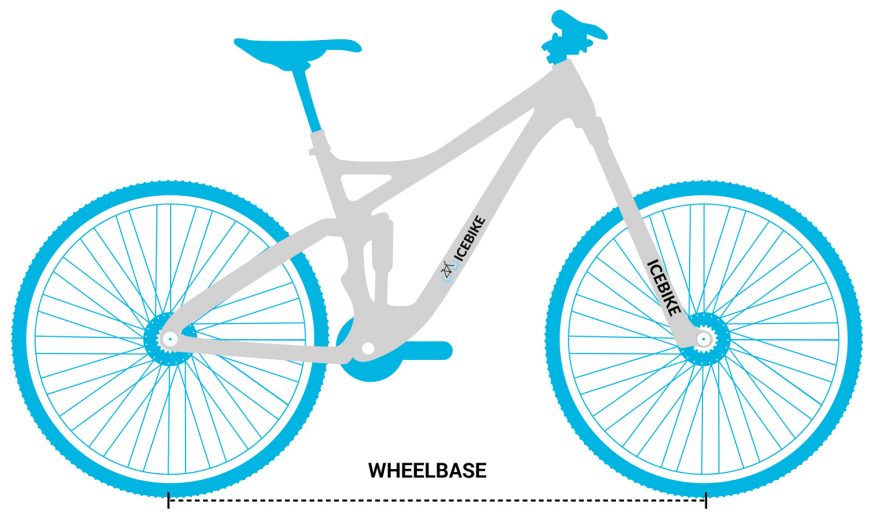
A dropper seat post is a valuable upgrade for mountain bikers, allowing you to quickly adjust saddle height on the fly for optimal pedaling efficiency on climbs and better control on descents.
Sizing Women’s Mountain Bikes:
Women’s mountain bikes often feature narrower handlebars and shorter frames to accommodate the typical female anatomy. However, many women find standard mountain bike sizes comfortable and prefer the wider range of options available.
Sizing Kids Mountain Bikes:
When sizing a kid’s mountain bike, prioritize a comfortable fit over buying a larger bike for them to “grow into.” A properly fitted bike will ensure a safe and enjoyable riding experience. Aim for 2-4 inches of standover clearance and ensure their legs are slightly bent at the bottom of the pedal stroke.
Unlock Your Mountain Bike Fit:
3. Women’s Mountain Bike Size Chart: Finding the Perfect Fit
Some women prefer women-specific mountain bikes, which offer narrower frames and other adjustments. However, many women find standard mountain bike sizes (often referred to as men’s sizes) to be comfortable and offer a wider range of options.
Women’s Mountain Bike Size Chart
| Height | Frame |
| 4’10” to 5’2” | 13” to 14” |
| 5’2” to 5’6” | 15” to 16” |
| 5’7” to 5’9” | 17” to 18” |
| 5’10” to 6’1” | 19” + |
4. Hybrid Bike Size Chart: Find Your Perfect Blend of Comfort and Efficiency
Hybrid bikes are ideal for commuting, leisurely rides, and fitness cycling. They blend the comfortable upright riding position of mountain bikes with the efficiency of road bikes.
When choosing a hybrid bike, aim for at least 1 inch of standover clearance between your crotch and the top tube.
Hybrid Bike Size Chart
| Height | Frame |
| 4’10” to 5’2” | 13” to 14” |
| 5’2” to 5’6” | 15” to 16” |
| 5’6” to 5’10” | 17” to 18” |
| 6’1” to 6’4” | 19” to 20” |
| 6’4” to 6’6” | 23” to 24” |
Explore Hybrid Bikes:
Find your ideal hybrid with our recommendations for picking the best hybrid bicycle.
5. Gravel Bike Size Chart: Conquer Unpaved Adventures
Gravel bikes are built for adventure, offering the versatility to tackle paved roads, dirt paths, and everything in between. Gravel bike sizing often uses seat tube length (cm) or T-shirt-style sizing (XS, S, M, etc.).
When choosing a gravel bike, pay attention to the geometry. Gravel bikes typically have a more relaxed and upright position compared to road bikes, providing better balance and comfort on uneven terrain. However, if you’re interested in gravel racing, you might prefer a more aggressive, aerodynamic position.
Gravel Bike Size Table
| Rider Height | Frame Size | ||
|---|---|---|---|
| Feet and inches | Centimeters | Effective Top Tube (cm) | Bike Size |
| 4ft 10in – 5ft | 148-152 | 47-48 | XXS |
| 5ft – 5ft 3in | 152-160 | 49-50 | XS |
| 5ft 3in – 5ft 6in | 160-168 | 51-53 | S |
| 5ft 6in – 5ft 9in | 168-175 | 54-55 | M |
| 5ft 9in – 6ft | 175-183 | 56-58 | L |
| 6ft – 6ft 3in | 183-191 | 58-60 | XL |
| 6ft 3in – 6ft 6in | 191-198 | 61-63 | XXL |
Gearing Up for Gravel Adventures:
6. Bike Size Chart for Kids: Finding the Right Fit for Growing Riders
Sizing a kid’s bike presents unique challenges as children grow quickly. While buying a slightly larger bike for them to “grow into” is tempting, prioritize a comfortable and safe fit for their current size. A bike that’s too large can hinder their control and lead to potential accidents.
Kid’s bikes are commonly categorized by wheel size, making it easier to find a suitable starting point.
Here’s a general guide based on wheel size and age:
- 12-inch wheels: Suitable for ages 3-4
- 14-inch wheels: Suitable for ages 4-5
- 16-inch wheels: Suitable for ages 5-8
- 20-inch wheels: Suitable for ages 7-9
- 24-inch wheels: Suitable for ages 8-11
Essential Tip: Pay attention to standover height – the clearance between your child’s crotch and the top tube. Aim for 2-4 inches of space for safe and comfortable dismounting.
Kid’s Bike Size Chart:
| Height | Age | Bike Wheel Size |
| 3’1” to 3’3” (90-100 cm) | 3 to 4 | 12” |
| 3’3” to 3’7” (100-110 cm) | 4 to 5 | 14” |
| 3’7” to 4’0” (110-120 cm) | 5 to 8 | 16” to 18” |
| 4’0” to 4’5” (120-135 cm) | 7 to 9 | 20” |
| 4’5” to 4’9” (135-145 cm) | 8 to 11 | 24” |
Find the Perfect Bike for Your Child:
- Guide to kids bike sizes and bike size charts for kids (Everything you need to know… literally!)
- Explore a wide selection of kids bikes
- How to find the correct bike size for your kids
Fine-Tuning Your Fit: Additional Ways to Calculate Your Bike Size
Here’s a quick recap of how to calculate your bike size:
- Measure Your Inseam: Remove your shoes and stand with your back straight against a wall. Place a book between your legs, spine up, and measure from the top of the book to the floor.
- Choose Your Bike Type: Select the type of bike you’re interested in (e.g., road, mountain, or city bike).
- Calculate: Multiply your inseam measurement (cm) by the corresponding factor for your chosen bike type:
- City bike: Inseam (cm) x 0.685 = Frame size (cm)
- Mountain bike: Inseam (cm) x 0.66 = Frame size (cm)
- Road bike: Inseam (cm) x 0.70 = Frame size (cm)
Tip: If you prefer to skip the calculations, use our free online bike calculator. Simply input your measurements and bike type to get your perfect size!
Crucial Considerations for a Perfect Bike Fit
To ensure your new bike fits like a glove, take these essential factors into account:
Height and Inseam: Your Foundation for a Comfortable Ride
Your height and leg inseam are fundamental measurements for determining bike size. However, body proportions vary greatly. Two people of the same height may have different inseam lengths due to varying torso lengths.
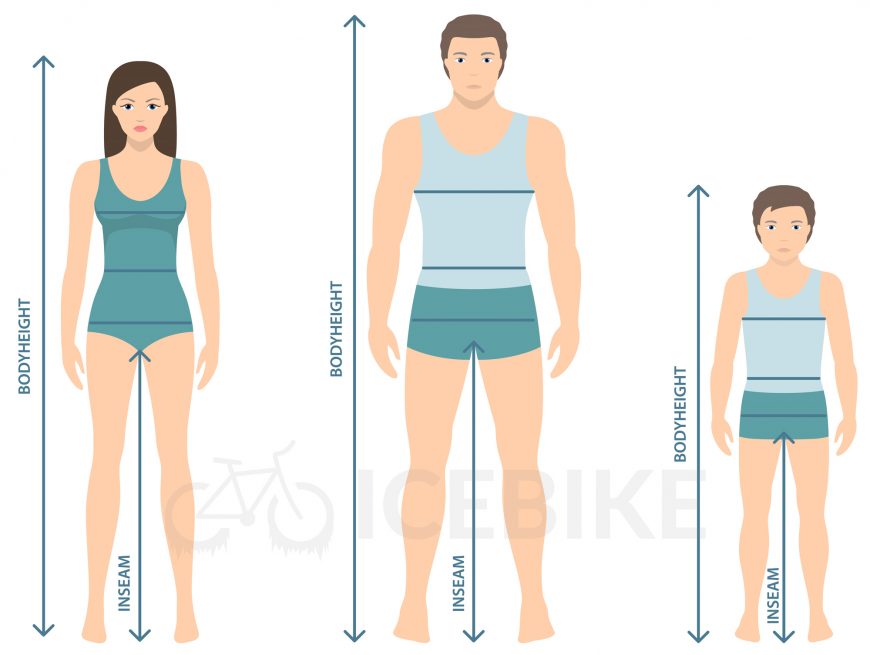
Frame Size: The Backbone of Your Bike
The bike’s frame size plays a pivotal role in your riding comfort and efficiency. A frame that’s too small can lead to cramped legs and an inefficient pedaling stroke. Conversely, a frame that’s too large can make it challenging to reach the handlebars and pedals comfortably.
When standing over the bike frame, you should have a minimum of 1 inch of clearance between your crotch and the top tube for hybrid, racing, or touring bikes. For mountain bikes, a clearance of 2 inches is recommended.
 Mountain Bike Frame
Mountain Bike Frame
For children’s bikes, aim for a clearance of 25 to 50 mm between your child’s crotch and the frame’s top bar when they are seated on the saddle with the balls of their feet on the ground.
Seat Position: Finding Your Sweet Spot
Saddle position is crucial for comfort and pedaling efficiency. The most common position is level, but some riders prefer a slight tilt forward or backward. Adjust the seat height so that your feet can comfortably reach the pedals without rocking your hips from side to side.
Optimize Your Saddle Fit:
- How To Fit Your Bicycle
- How to adjust your bike seat (with pictures)
Handlebars: Steering Comfort and Control
Handlebar position is crucial for preventing back, wrist, and shoulder pain. The width of the handlebars should generally be about the same as your shoulder width. The height of the handlebars varies depending on the bike type. Road bikes typically have lower handlebars for a more aerodynamic position, while hybrids and mountain bikes often have higher handlebars for a more upright riding position.
Wheel Size: Matching Your Wheels to Your Riding Style
Wheel size, measured by diameter, is another important factor to consider. Mountain bikes typically come with 26-inch or 29-inch wheels, with larger wheels offering better rollover capability. Hybrid, road, and touring bikes usually have 29-inch wheels with narrower tires for better efficiency on paved surfaces. BMX bikes typically come with 20-inch or 24-inch wheels.
Children’s bikes have varying wheel sizes based on the child’s age and height:
- 12-inch wheels: Suitable for ages 3-5
- 16-inch wheels: Suitable for ages 5-7
- 20-inch wheels: Suitable for ages 7-10
- 24-inch or 26-inch wheels: Suitable for ages 10 and up
Common Bike Sizing Questions
My height is right between two bike sizes. What should I do?
If your height falls between two frame sizes, consider your riding style and preferences. For a more relaxed, upright position, opt for the larger size. If you prefer a more aggressive, aerodynamic position or prioritize maneuverability, the smaller size might be a better fit. Consider your inseam length and make sure there is at least an inch of clearance (more for mountain bikes) between your crotch and the top tube when standing over the bike.
What is “standover height,” and why does it matter?
Standover height is the distance between the ground and the top of the bike’s top tube. It’s a crucial measurement for safety and comfort, especially for beginners. When you straddle the bike with your feet flat on the ground, there should be at least 1-2 inches of clearance between the top tube and your crotch. This allows you to dismount quickly and safely in case of an emergency or when coming to a stop.
What is ‘reach,’ and why is it important in bike sizing?
Reach is the horizontal distance between the bottom bracket (where the pedals connect to the frame) and the center of the head tube (where the fork connects to the frame). It determines how far you have to extend your arms to reach the handlebars. A longer reach will put you in a more stretched-out position, good for aerodynamics and speed, while a shorter reach creates a more upright position, ideal for comfort and control.
How do I know if my bike seat is at the right height?
To check your saddle height, sit on the bike and place one heel on a pedal. When the pedal is at its lowest point in the pedal stroke (6 o’clock position), your leg should be almost fully extended, with just a slight bend in the knee. If you have to point your toes down or your knee is excessively bent, you need to adjust the seat height.
What is the best handlebar position for me?
Handlebar position is crucial for comfort and control. There is no single “best” position, as it depends on your riding style and preferences. Road cyclists often prefer lower handlebars for a more aerodynamic position. Mountain bikers tend to favor higher handlebars for better control and leverage on technical terrain. Hybrid and cruiser bike riders often opt for an upright position with handlebars level with or slightly higher than the saddle. It’s best to experiment with different positions to find what feels most comfortable for you.
My hands go numb when I ride. What should I do?
Hand numbness is a common cycling complaint, often caused by excessive pressure on the nerves in your hands. This can happen if your handlebars are too low or your reach is too long, putting too much weight on your hands. Try raising your handlebars or shortening the reach by using a shorter stem. Wearing padded gloves and changing hand positions frequently can also help alleviate numbness.
Summary: Find Your Perfect Bike and Ride with Confidence
We’ve provided you with comprehensive bike sizing charts, essential considerations, and expert tips to help you find the perfect bike. Remember, a properly sized bike is key to a comfortable, efficient, and enjoyable riding experience. Whether you’re hitting the trails, commuting to work, or embarking on a long-distance adventure, ride with confidence knowing you’ve chosen the right fit!
Should you have any questions or require further clarification on the topic, please feel free to connect with our expert author Jerry O by leaving a comment below. We value your engagement and are here to assist you.



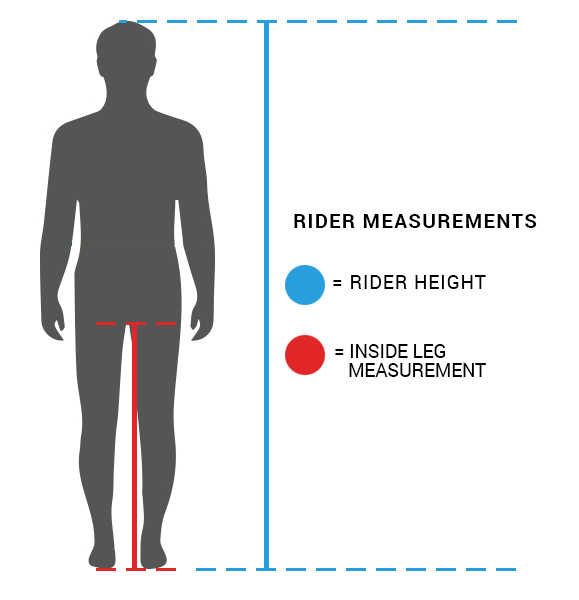
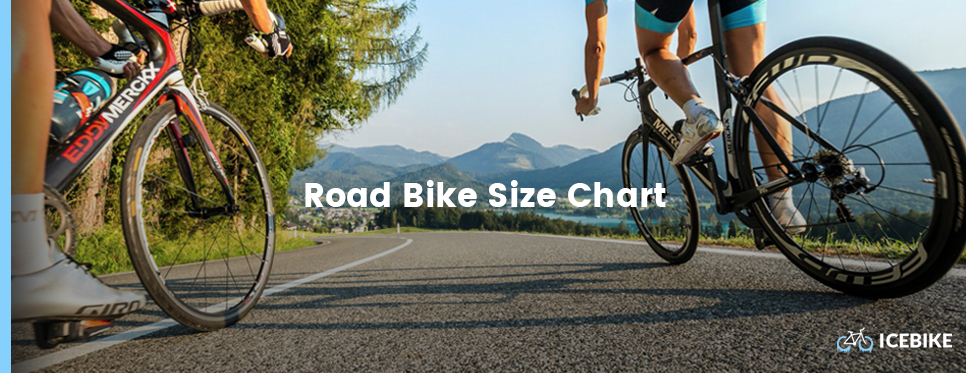
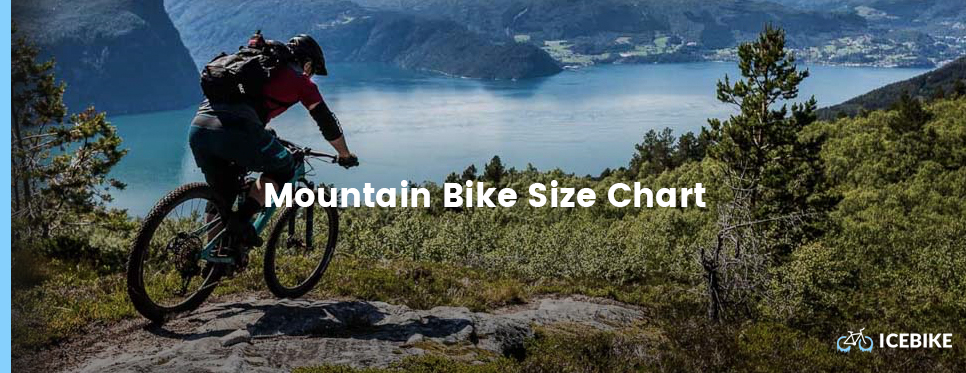
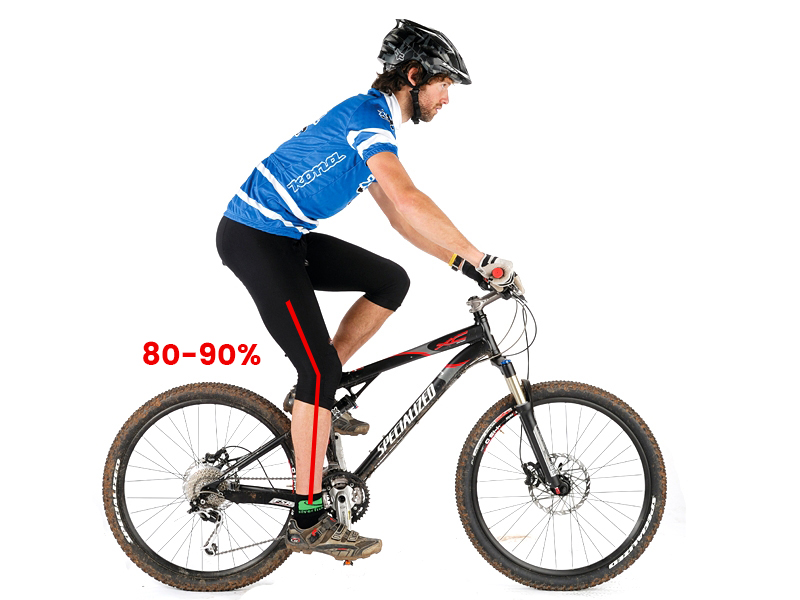
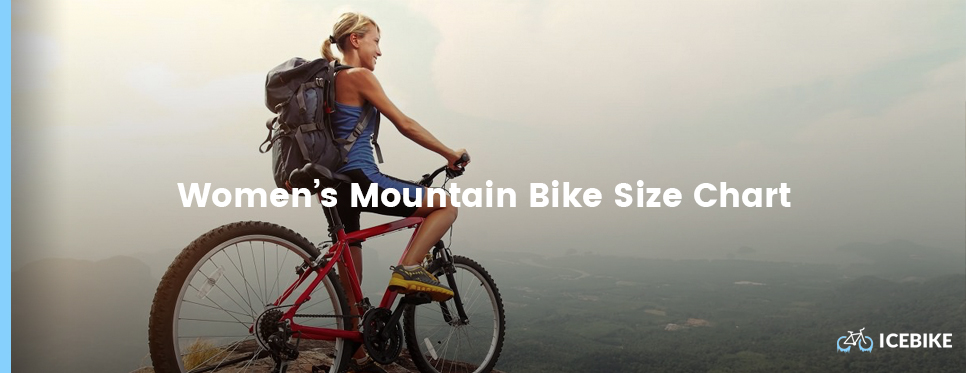
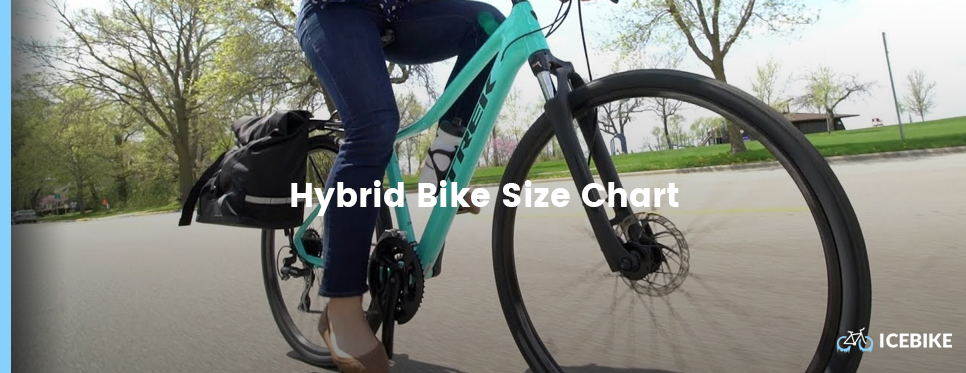
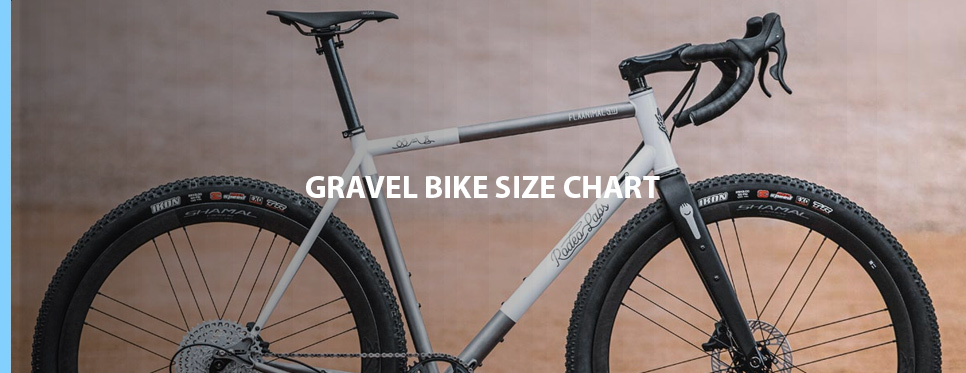

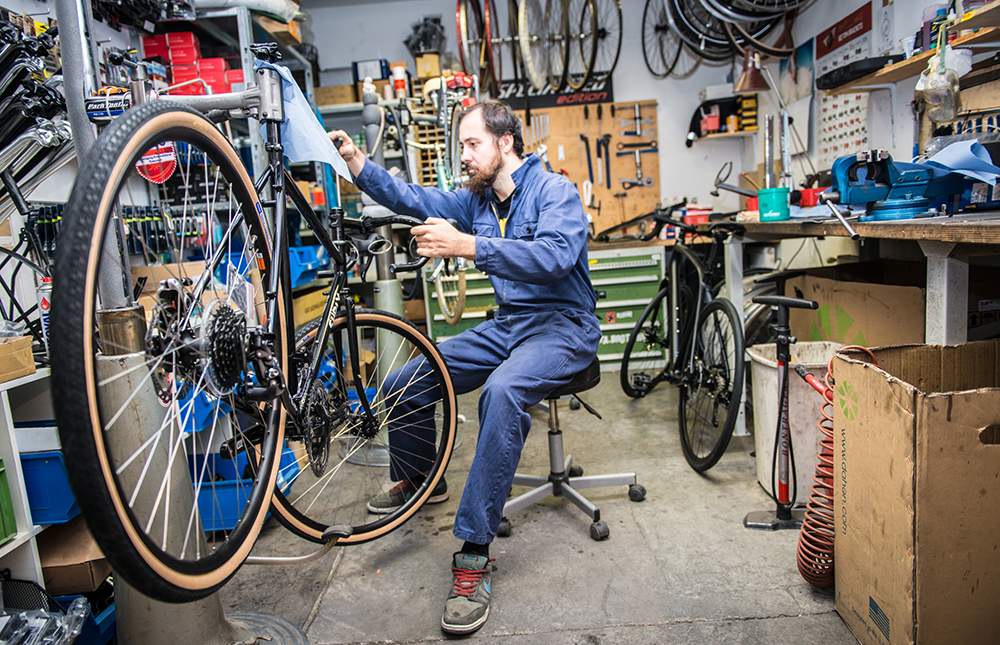
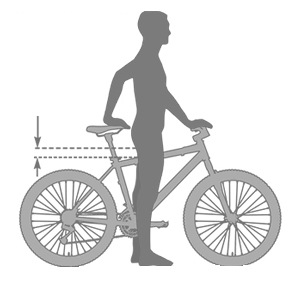 Mountain Bike Frame
Mountain Bike Frame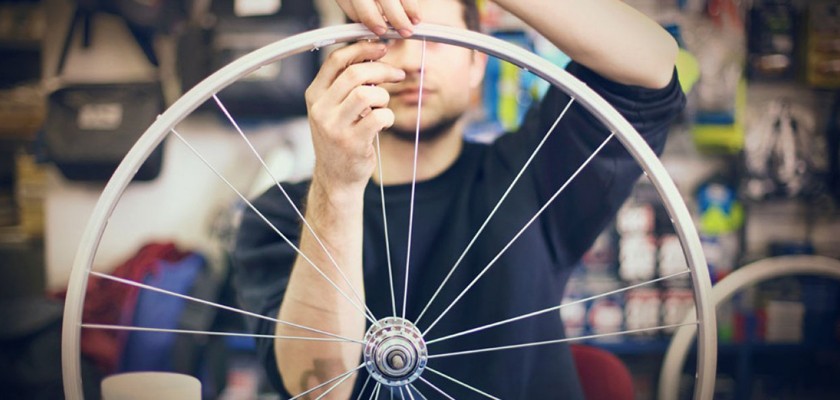


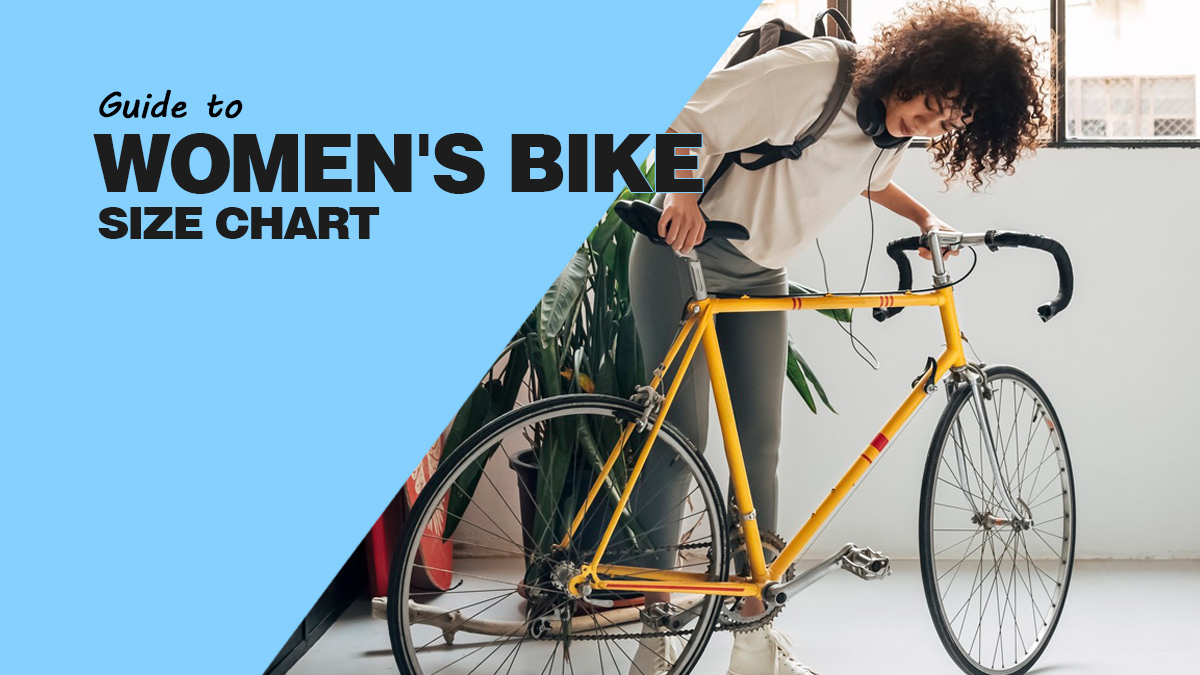

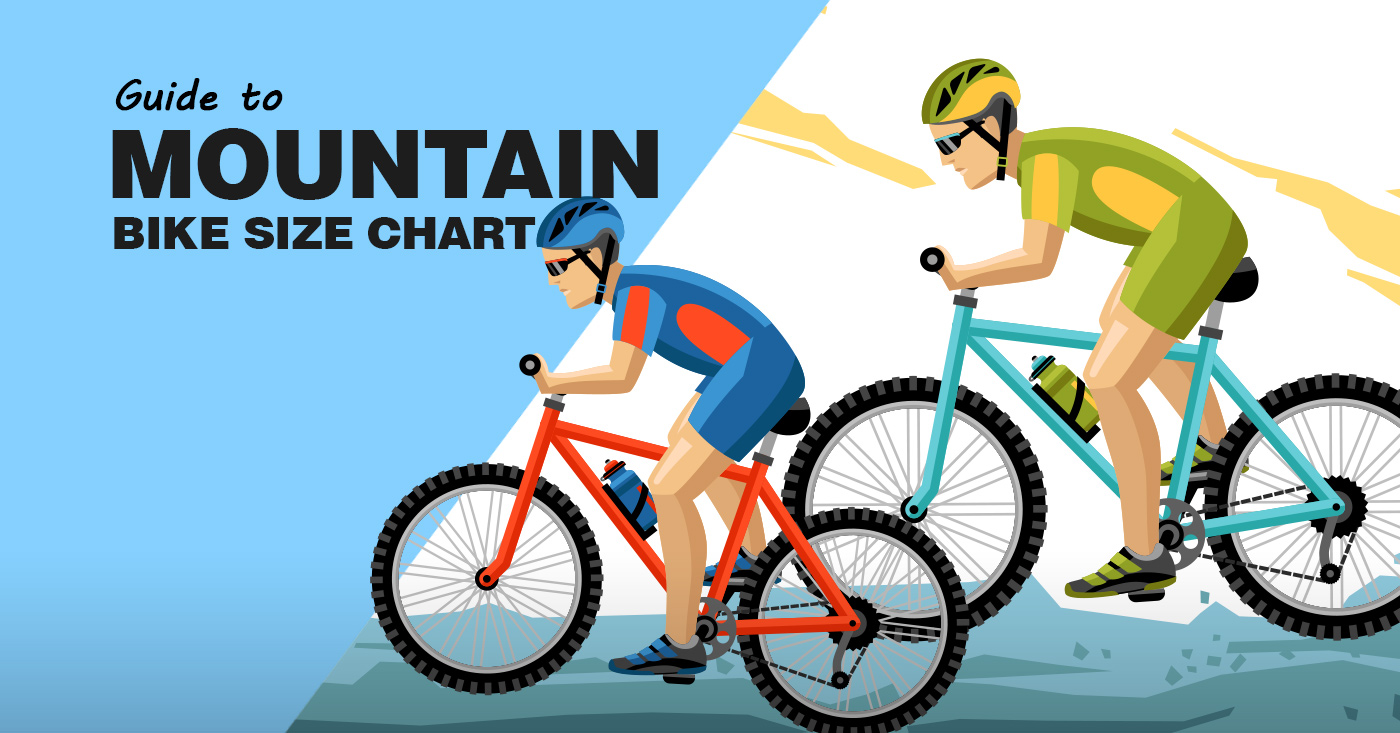

13 thoughts on “Bike Size Chart: What Size Bike Should I Get?”
Also, a very important yet overlooked factor when choosing a bike: Do you look and feel cool while riding it?
How could we forget the most important factor 🤙
Based on the chart above, the hybrid size I should get is:
16″ 53-54 cm
I’m confused, 16″ is only ~41 cm. When looking at bike frame sizes, are they measured differently in inches versus centimeters? It does not seem like it is a direct conversion.
“”Let assume your leg inseam is 80cm, then the perfect frame size for your right road bike size is 56 cm. According to the chart above, your perfect bike will be a small-sized road bike.””
Your calculation is right, but your decision is wrong.
Your 56cm-bike will be a ”large”-sized road bike. Right?
Great info, thanks for sharing! While I often see bikes being sold by tire size in many places, both local and online, it’s interesting to learn about the importance of frame size from sources like your site. It would be wonderful to see more alignment between the information provided and market practices. Any ideas on how to bridge this gap?
The chart is helpful for choosing a bike but I’m looking to buy a recumbent exercise bike or some other exercise bike. Any chart for that?
Are you curious what’s the right BMX size for you? Having one that fits perfectly to your height allows you to stay comfortable throughout the ride. Getting the right size for you depends on your reach and height: For people with a height of 110 to 122 cm, the suggested BMX wheel size is 16 inches. Children from seven to 11 years old that are 122 cm to 147 cm in height are good to have a wheel size of 18 inches. While people with a height of 147 cm to 193 cm can have BMX bikes 20 inch.
You can try to take measurements anywhere, but it’s best to have a solid free wall when you’re trying to stay upright. Make sure that the space is spacious when you lean back against it.
going to go with the frame 1″ below the crotch method – it seems the simplest and logical. Will see if it works
Absolutely, finding the right BMX size is crucial for comfort and performance! Based on the guidance, we’ve added a new BMX size chart to our resources. This should help further in ensuring riders find the perfect fit according to their height and age. Happy riding!
Dalton Bourne, while you can take measurements in various locations, it’s ideal to have a clear, solid wall to ensure you remain upright. Ensure there’s ample space around you, especially when leaning back against the wall.
I think this bike size chart is a great resource! It’s always helpful to have a reference when shopping for a bike, and this chart is easy to understand and use.
I’m glad you found it helpful.